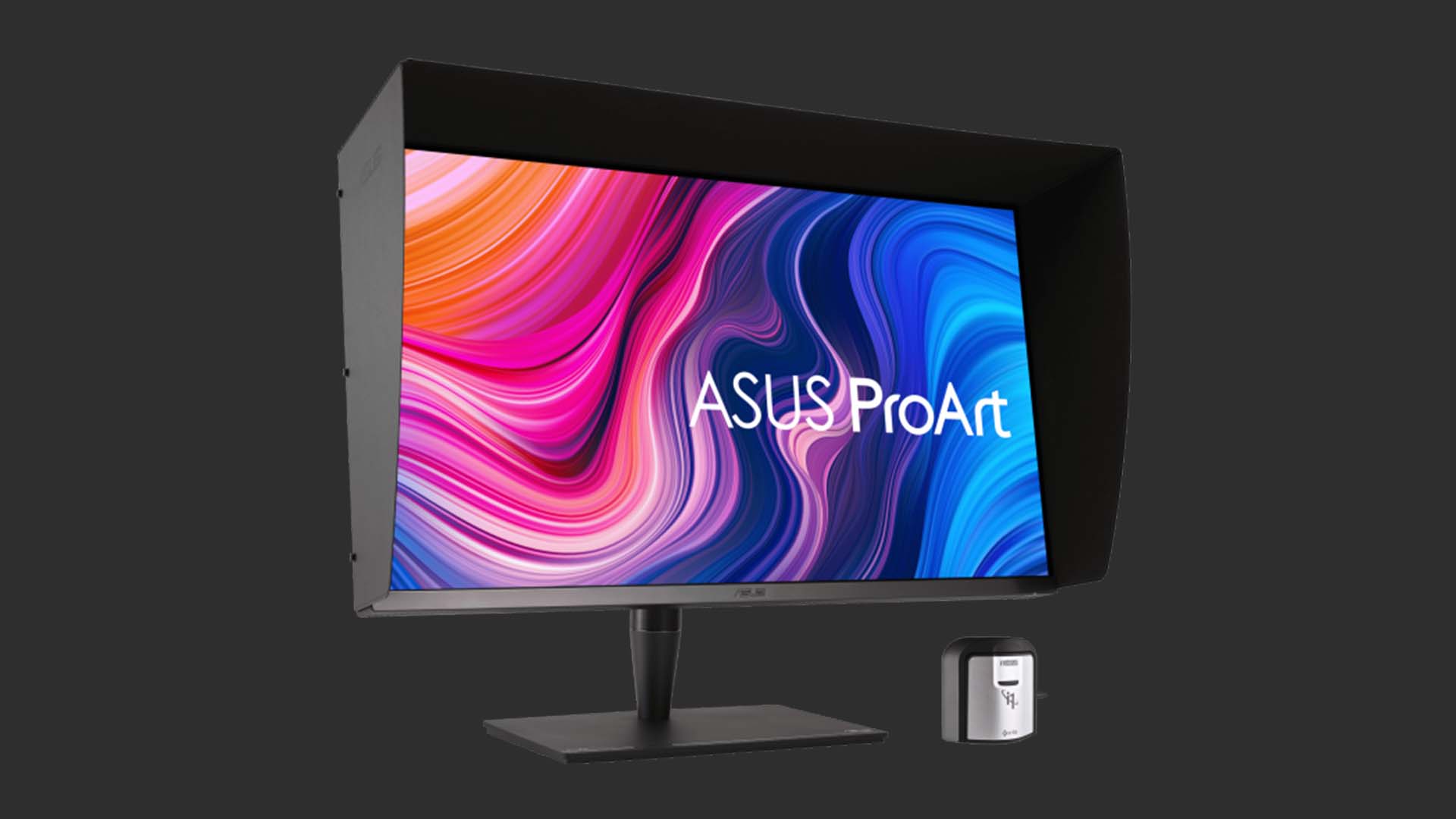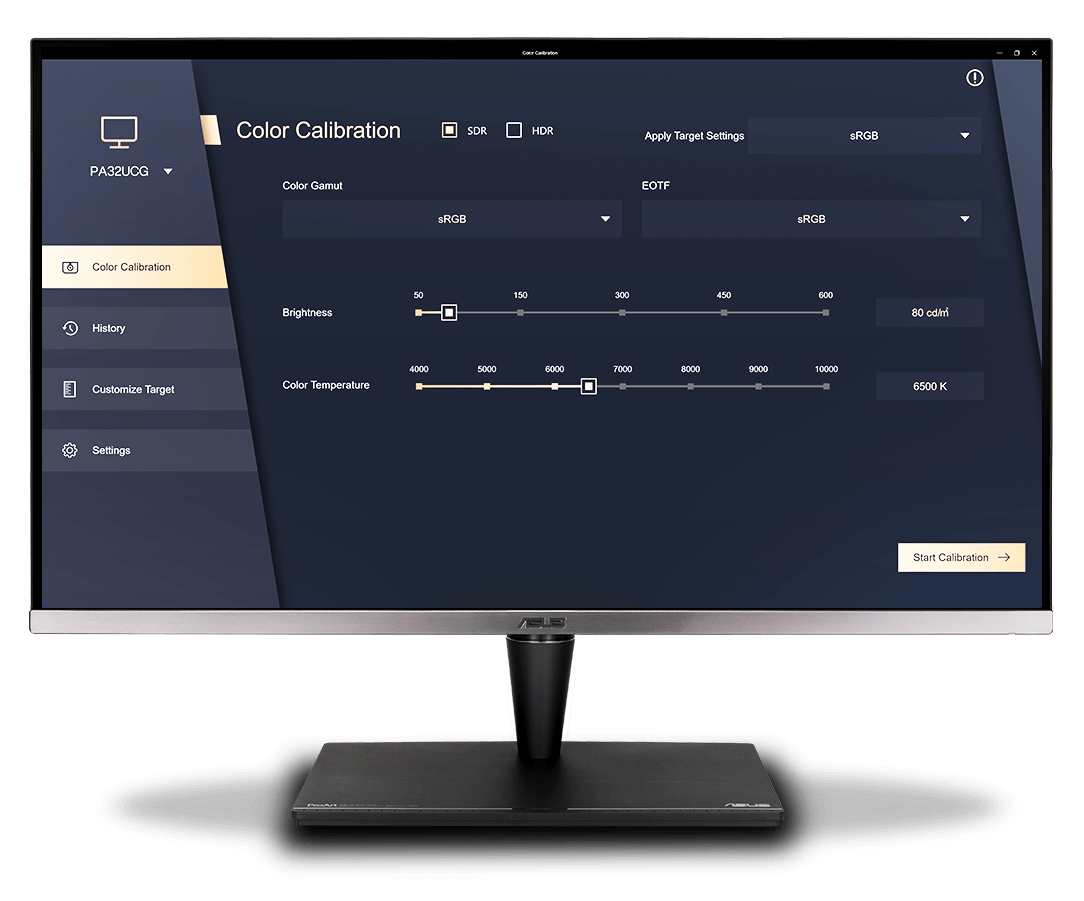
Whether you're editing video or designing computer graphics, a dedicated, purpose designed monitor can make your life a lot easier.
With bigger and better televisions being released all the time, the lines between traditional monitors and TVs are being blurred more and more. One look at the price difference and apparent spec sheets between a seemingly capable TV and a dedicated photo editing or video editing monitor can lead you to believe that the former would suffice.
In many cases, particularly if you are on a very tight budget, you can squeeze by with a TV, as we've written about in the past. But for professional work, where a client is paying you for a result, you owe it to yourself to purchase something designed for the job.
For those who work on high end jobs, such a suggestion will come as no surprise. Yes, we're looking at you LGG participants! And whilst occasionally our opinions on doing things on a budget can cause some, shall we say "objections", we do at least back it up with evidence and facts. However with all that said, we would never suggest that someone who requires colour accuracy for a living do their work on a budget non-calibrated television set. Very far from it! I wouldn't be writing this article if we did.
The really good news is that to own a colour accurate HDR capable monitor today is a lot less expensive than it was a few years ago. At one time the only way to have a decently sized monitor for grading video was to shell out £30-40K or even more. Now you can purchase a colour accurate Mini-LED powered 4K HDR monitor for a fraction of that, and it will be capable of multi-purpose functionality, from games design to colour grading.
Obviously, the more you pay, the more colour accurate and capable the monitor will be. However depending on how critical your work is, the ASUS ProArt series of monitors ranges from 21-inches all the way up to 32-inches, and encompasses every budget from around £219 for the SDR PA248QV 1920x1080 display, all the way up to the flagship 4K 1600 nit Mini-LED Dolby Vision capable PA32UCG at around £5000. Clearly this will always be a cost vs requirements exercise.
Now, I should quite obviously reiterate that the best monitor in the world still requires a good viewing environment in order to get the best from it when it comes to judging exposure and colour accuracy. You wouldn't mix audio in a metal bucket, any more than you'd grade video in a sunny greenhouse. However, a modern monitor such as this offers more than just colour accuracy.

The ASUS ProArt calibration software.
120Hz
For example, I've been using the PA32UCG for a while now, I'll be writing a long-term review for RedShark very soon, and it's versatility offers much more than just editing or video grading. One of its headline features is that it can run at 120Hz, something that is a very obvious advantage if you are developing gaming graphics, or you are working in 3D apps. It is also useful for responsive general editing, with interfaces such as the one in DaVinci Resolve now supporting 120Hz ProMotion on the latest Apple laptops. This also means the ability to edit extremely high frame rate video. Being able to playback and edit 4K HDR 120fps video in realtime has an immediacy not seen in common all garden 60p footage. It is literally like looking out of a window. It's a niche perhaps, but for VR purposes, HFR video and CGI like this will become more common, and there'll be a need to be able to view it at its native frame rate.
The PA32UCG also offers very quick switching between modes. So you can grade in PQ HDR one moment, and then switch the monitor and timeline over to Rec.709 to edit in that mode. You can also preview in other colourspaces, too, giving you a good overview of how things will look on different devices. This is a facility that you simply cannot find on a consumer display or television.
Colour accuracy and calibration
Another advantage that monitors such as this offer is that they are fully capable of being re-calibrated, as well as having a known, measurable, response when it comes to different colourspaces. If your monitor is 'coloured' by any manufacturer preferences you will never obtain a truly accurate view of the image. Just as if you mixed music with consumer speakers, you can end up compensating for issues with the monitor in your grading, rather than issues with the actual camera image. You need to know that the monitor is set up neutrally to the base standards.
Each of the ASUS monitors comes from the factory with a calibration certificate showing the monitor's individual accuracy, but using the company's calibration software you can further tune things to your own satisfaction. Again, this is the sort of control you usually cannot obtain with a consumer television set.
At the end of the day it comes down to having something that is a known quantity. A consumer display is designed to give you the best looking picture, whilst a purpose designed grading or editing monitor is designed to give you the most accurate looking image it can. Obviously the more you pay, the better it will be, but if you are doing paying work then that is an investment that cannot be ignored, and with a variety of budgets being catered for, there's less reason not to take it into serious consideration.


Comments